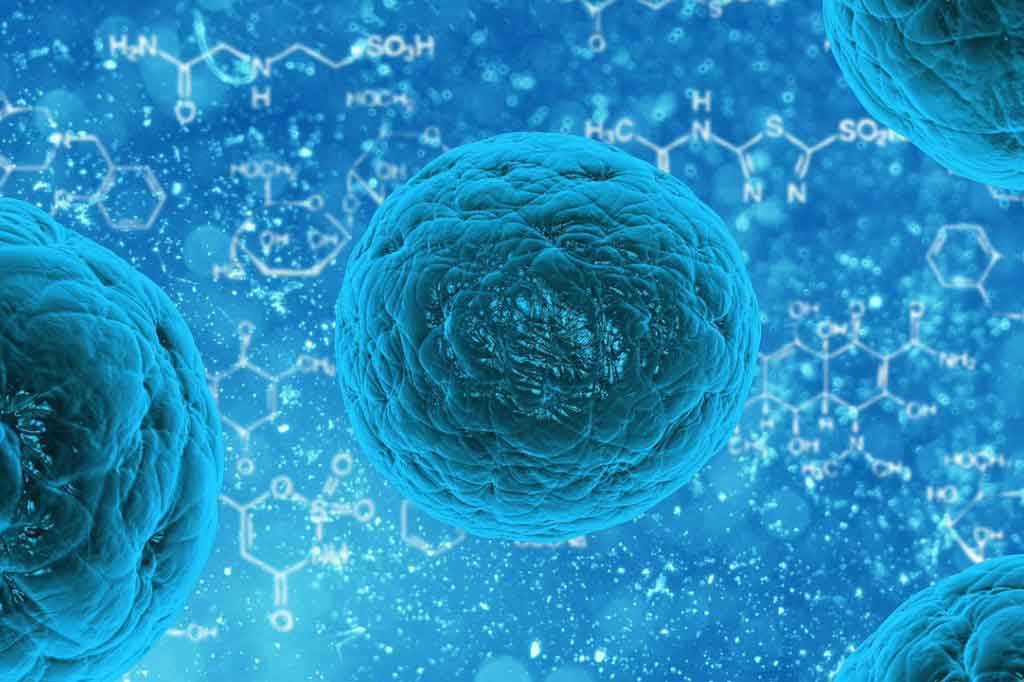'Greedy gene' that stops some people from feeling full discovered
Genetics and stem cells
"A single gene mutation may be all it takes to determine if a person is prone to becoming obese," the Mail Online reports. A particular genetic variant may disrupt the normal workings of a protein…
"A single gene mutation may be all it takes to determine if a person is prone to becoming obese," the Mail Online reports.
A particular genetic variant may disrupt the normal workings of a protein – brain-derived neurotrophic factor (BDNF) – that helps regulate appetite after eating.
Researchers have examined brain tissue samples to see whether variations in the DNA sequence of the gene that "codes" for the BDNF protein influenced how much of the protein was produced.
It then followed up the findings in cohorts of adults and children to see whether this sequence was linked to people's body mass index (BMI).
The findings suggested that one particular variation in the DNA sequence of the gene was associated with lower levels of this protein. Those inheriting two copies of the BDNF gene with this variation were more prone to obesity.
The suggestion is that lower levels of BDNF protein may mean that a person is still hungry even if they have eaten enough food to satisfy the body's energy requirements, leading to weight gain.
The researchers suggest that increasing BDNF protein levels may be a possible therapeutic target to treat obesity. However, it is difficult to say at this stage whether such a treatment could be developed or be effective.
It is thought that the current obesity epidemic is being, in the main, driven by environmental, not genetic, factors. Read more about the causes of obesity and what you can do to tackle it.
Where did the story come from?
The study was carried out by researchers from the National Institute of Child Health and Human Development (NICHD) and the National Institute of Mental Health (NIMH), Bethesda, Maryland, and several other institutions in the US and Belgium, and was published in the peer-reviewed scientific journal Cell Reports.
Funding was provided by the Intramural Research Program of NICHD and NIMH, the National Institute of Health, and the National Institute of Minority Health and Health Disparities.
The article is open-access, so it is freely available online.
The Mail Online's headline "Being obese IS in your genes!" is misleading; it seems to suggest that being obese definitely is all in the genes, and that one precise "mutation" provides the whole answer to obesity, which is not the case. Even in this study, some people who did not carry this genetic variation were overweight or obese.
Also, the main body of the article is contradictory, saying first that the variant in question is rare and then saying that it was common.
What kind of research was this?
This was laboratory research that aimed to look into the possible genetic determinants of obesity. The research centres on a particular protein called BDNF, which is thought to play a role in energy balance, influencing our body weight and how much we eat.
The researchers say how population-based studies have linked obesity to single "letter" changes in the DNA sequence (single nucleotide polymorphisms or SNPs) of the BDNF gene, which carry the instructions (codes) for making the protein.
This study aimed to look at a variety of SNPs in the BDNF gene to see what influence they had on activity of the BDNF protein in a brain region that has a role in telling us that we feel full (the ventromedial hypothalamus).
What did the research involve?
The laboratory study involved donated human brain tissue obtained at autopsy and data collected from people participating in different cohort studies.
The researchers examined the ventromedial hypothalamus in the autopsy samples from 84 people, looking at 44 target SNPs in the BDNF gene.
The SNP that was found to be most significantly associated with BDNF gene activity in the ventromedial hypothalamus was then further investigated in the data from the cohort studies. The ventromedial hypothalamus is an area of the brain associated with some of the most primal human emotions, such as sexual attraction, fear and appetite.
Four cohorts were subsequently examined: two cohorts of African-Americans (almost 30,000 people), and two cohorts of healthy children and adolescents (almost 2,000) – one of which included only Hispanic individuals. In these populations they examined the association of the SNP with body composition.
What were the basic results?
Of the 44 SNPs examined in the BDNF gene, one called rs12291063 was significantly associated with BDNF protein production and activity in the ventromedial hypothalamus, and with BMI.
The four "letters" called bases, which make up our DNA, are called A, C, T and G. The researchers found that having a T base at this rs12291063 location on both copies of the BDNF gene (called having a TT genotype) was required for normal BDNF gene activity.
Instead, inheriting two gene copies with a C base at this location was associated with reduced gene activity of the protein. Children and adults with a CC genotype had a higher BMI than those with either TT or CT genotypes.
How did the researchers interpret the results?
The researchers conclude that their findings "provide a rationale for [increasing BDNF levels] as a targeted treatment for obesity in individuals who have the rs12291063 CC genotype."
Conclusion
This research aimed to look into possible genetic influences on obesity – an area that has been frequently studied in the past.
This study focused on the brain protein BDNF, which is known to play a role in controlling energy balance and how much we eat, and the gene coding for it.
The findings suggested that a particular base letter in the DNA sequence of the gene was associated with levels of this protein and with BMI. It appears that those with two copies of the BDNF gene carrying a C base in one particular location were more prone to obesity.
The researchers suggest that increasing levels of BDNF may be a possible therapeutic target in people who carry two C variants. However, it is difficult to say at this stage whether such a treatment could be developed or be effective.
What it is possible to say is that even if this single substitution on the BDNF gene is one genetic factor that has an influence on our appetite, satiety and BMI, it is does not provide the whole answer to the obesity epidemic. To show this, even some people with no C variants in this study were overweight or obese.
Though including a large overall sample size in the cohorts, it was predominantly African-American and Hispanic populations that were studied. The same observations may not have held true in other population samples. There are likely to be other genes which affect a person's predisposition to being overweight or obese.
Regardless of any genetic influence there may be on BMI – and whether or not treatments could be developed to target our genetics – one way that will tackle overweight and obesity is to follow a healthy, balanced diet combined with regular exercise.
The NHS Weight Loss plan uses both to help you achieve sustainable weight loss.






 Subscribe
Subscribe Ask the doctor
Ask the doctor Rate this article
Rate this article Find products
Find products







